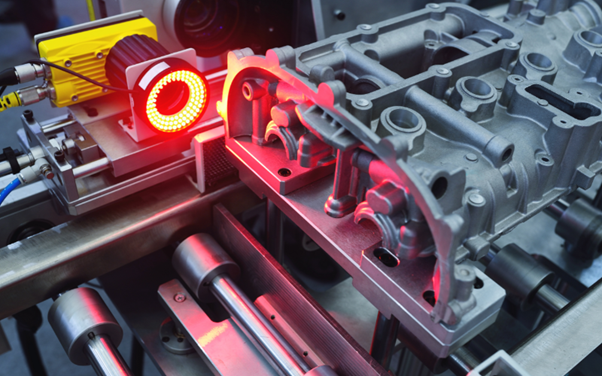Introduction
In the fast-paced world of technology, staying ahead means integrating the best and latest in sensing technology. As Singapore advances in industrial automation and smart technologies, the need for precise and reliable sensors becomes crucial. This article explores how capacitive proximity sensors, vision sensors, positioning sensors, capacitive sensors, and fibre optic sensors can be optimised for superior detection and performance.
Capacitive Proximity Sensors
Understanding Capacitive Proximity Sensors
Capacitive proximity sensors are a type of sensor that detect the presence of an object without physical contact. These sensors use capacitive fields to sense changes in capacitance caused by the presence of an object. In Singapore’s bustling manufacturing and automation sectors, these sensors are invaluable for applications requiring high-speed detection and minimal wear and tear.
Applications and Benefits
Capacitive proximity sensors are widely used in various applications, from detecting the level of materials in tanks to controlling machinery. Their non-contact nature makes them ideal for environments where traditional mechanical switches would wear out quickly. In Singapore’s humid and high-traffic industrial environments, these sensors are robust and reliable, offering long-term performance.
Optimisation Tips
- Calibration: Regular calibration ensures accurate readings and extends sensor life.
- Shielding: Proper shielding can reduce interference from external electrical noise.
- Installation: Ensure correct placement and alignment to maximise detection efficiency.
Vision Sensors
What Are Vision Sensors?
Vision sensors capture and analyse images to perform tasks such as quality inspection, measurement, and guidance. They use cameras and image processing algorithms to detect and interpret visual information. For Singapore’s precision-driven industries, vision sensors offer critical advantages in quality control and automated inspections.
Applications and Benefits
Vision sensors are crucial in applications where precise measurement and quality assurance are required. They can detect defects in products, guide robotic arms, and ensure components meet specified criteria. In Singapore’s competitive market, utilising vision sensors helps maintain high standards and improve operational efficiency.
Optimisation Tips
- Lighting: Proper lighting enhances image quality and accuracy of inspections.
- Resolution: Higher resolution cameras provide better detail and more accurate readings.
- Processing: Use advanced algorithms to enhance image analysis and decision-making.
Positioning Sensors
Defining Positioning Sensors
Positioning sensors measure the position or displacement of objects. They play a vital role in automation systems, robotics, and various industrial applications. In Singapore, where technological advancement is rapid, accurate positioning sensors are essential for high-precision tasks.
Applications and Benefits
Positioning sensors are used in robotics, CNC machines, and automated assembly lines. They ensure that machines and robots operate within precise parameters, improving productivity and reducing errors. Singapore’s focus on high-tech manufacturing makes positioning sensors critical for maintaining competitive edges.
Optimisation Tips
- Calibration: Regular calibration ensures accurate positioning and reduces drift.
- Environment: Consider environmental factors such as temperature and vibration, which can affect sensor performance.
- Integration: Ensure seamless integration with control systems for optimal performance.
Capacitive Sensors
Overview of Capacitive Sensors
Capacitive sensors are versatile and used in various applications for detecting changes in capacitance. They can be employed in touchscreens, level sensors, and more. In Singapore’s tech-savvy market, capacitive sensors are integral to modern devices and systems.
Applications and Benefits
Capacitive sensors are used in touch-sensitive devices, level measurement, and as proximity sensors in various applications. Their high sensitivity and non-contact nature make them ideal for applications where precision and durability are required. They play a crucial role in consumer electronics and industrial applications in Singapore.
Optimisation Tips
- Sensitivity Adjustment: Adjust sensitivity settings according to the application needs.
- Surface Preparation: Ensure surfaces are clean and free from contaminants.
- Environmental Considerations: Consider the impact of environmental factors such as humidity and temperature.
Fibre Optic Sensors
Exploring Fibre Optic Sensors
Fibre optic sensors use light transmitted through optical fibres to detect changes in their environment. These sensors are known for their high sensitivity and ability to work in harsh conditions. In Singapore, where industrial and infrastructural projects are prevalent, fibre optic sensors offer significant advantages.
Applications and Benefits
Fibre optic sensors are used in structural health monitoring, temperature sensing, and pressure measurement. They are highly suited for applications in challenging environments, such as construction sites and industrial plants. Their resistance to electromagnetic interference and long-distance capabilities make them valuable in Singapore’s diverse technological landscape.
Optimisation Tips
- Installation: Ensure proper installation to avoid signal loss and degradation.
- Calibration: Regular calibration and maintenance are essential for accurate readings.
- Protection: Use protective coatings to safeguard against environmental factors.
Conclusion
Optimising detection with capacitive proximity sensors, vision sensors, positioning sensors, capacitive sensors, and fibre optic sensors is crucial for achieving superior performance in various applications. Singapore’s dynamic technological environment demands precision and reliability, making the integration of these sensors essential for maintaining a competitive edge.
For more information on integrating advanced sensing technologies into your operations, Contact Pepperl+Fuchs directly.










